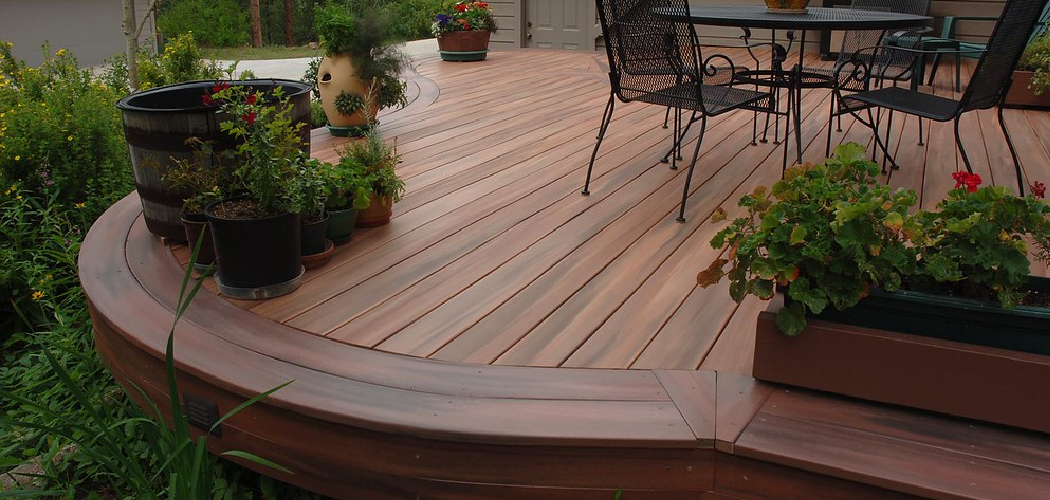Do you want to create something beautiful and unique for your outdoor living space? You must know how to bend composite decking. Have you considered bending composite decking boards to form an eye-catching curved feature in your landscaping or garden design?
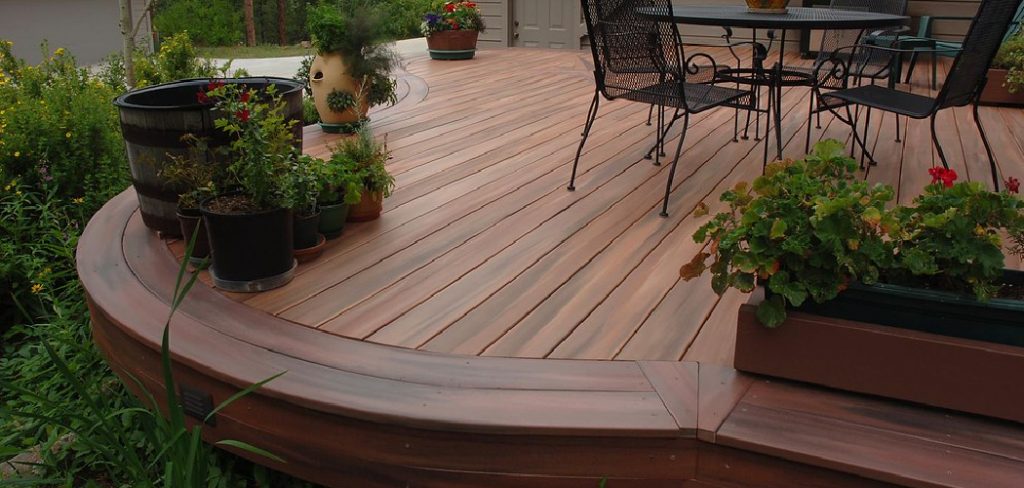
Although it’s not something that is typically associated with a DIY project, bending composite decking can be relatively easy if you have the right tools and materials. This blog post will explain everything you need to know about how to safely bend composite decking – so keep reading!
Tools You Will Need
- Heat gun
- Protective gloves & eyewear
- Protective clothing
- Jig saw or circular saw
- Clamps
- Tape measure
6 Steps Guide on How to Bend Composite Decking
1. Measure the Area
Installing curved composite decking can give your outdoor space an elegant, luxurious look. To ensure the installation goes smoothly, it is important to measure the area accurately so that the curves are correctly placed. Before you install your curved composite decking, take care to measure the area and draw up a sketch of where the board should go.
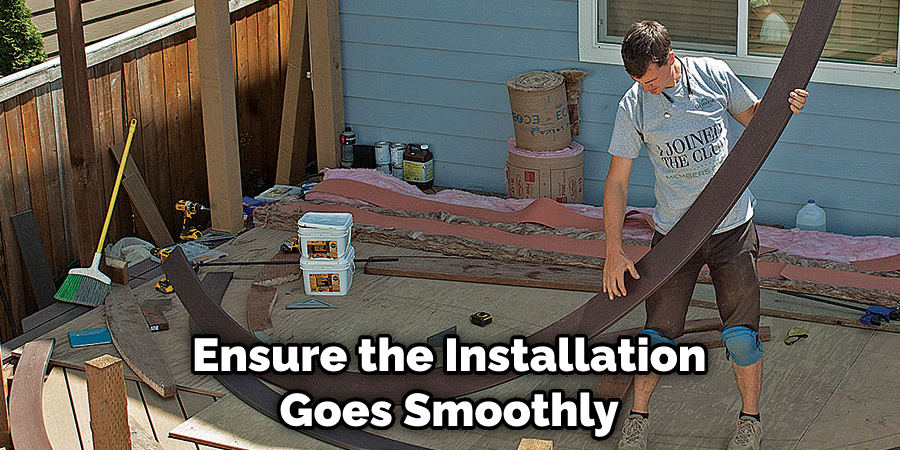
Mark these measurements on a piece of scrap wood before you begin bending it, as this will help you map out which areas should curve and how much bend is required for each piece. Armed with your measurements and scrap wood mock-up, you should be ready to start bending and installing your composite decking for a stunning, stylish finishing touch to your outdoor space!
2. Cut the Composite Decking Boards
When securing composite decking boards around bends in the space you are working with, it is important to cut the boards slightly longer than what the measurements indicate. This allows for the necessary space for the boards to bend into their curved shape. Keep in mind that even though composite decking is weather-resistant and strong, hard bending can cause some warping so do not make the strips too long or overly tight.
Once you have your strips cut, assemble them to form a gentle arc and hold them securely in place until they dry and set into the desired shape. With careful planning and a bit of patience, your composite deck will soon display a beautiful curved pattern!
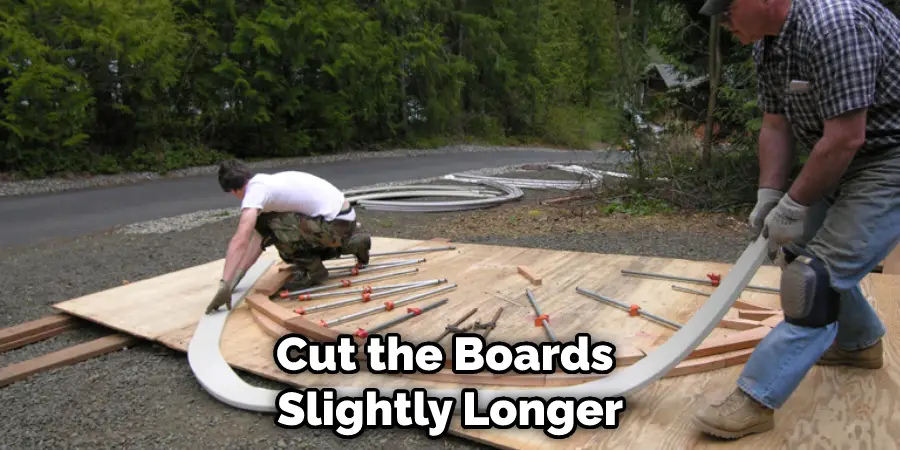
3. Heat One Side of Each Strip
For easy manipulation of composite decking, you should consider using a heat gun. Make sure to use caution, as the heat gun may become too hot and damage the material if moved too quickly or used for an excessive amount of time. Focus on using the heat on one side of the strip at a time, for approximately 10 to 15 seconds, so that it becomes soft and pliable enough to bend without breaking.
Move the heat gun back and forth along the length of the strip so that the entire surface is heated evenly. Once it is properly heated, you can begin to shape your decking into your desired design. Be sure to take proper safety precautions while using a heat gun – always wear gloves, and eye protection and follow manufacturer instructions when operating any device. With these simple tips in mind, you’ll be sure to be well on your way to creating beautiful composite decking!
4. Secure the Heated Composite Decking Strips
Before beginning your composite decking project, it is essential to take the necessary safety precautions: make sure to wear protective clothing and eyewear at all times. During installation, use clamps to secure the heated composite decking strips in place on the scrap wood. This will help ensure that each strip is held securely as you are bending them into shape.
It is also important to note that when bending a composite decking strip, you should hold the heat source constant until the bend is complete – making sure not to exceed the maximum heating time for any given area of the material. Following these simple precautionary steps will ensure optimum performance from your newly installed composite decking.
5. Bend the Heated Strips
To achieve the desired curved shape for your composite decking, you’ll need to gradually heat and bend the strips. Start by using a specialized heating device or a hot air gun to warm up the material. Then, use your hands or two sets of clamps to gradually bend the heated strips in line with the measurements taken in step one.
As they begin to cool, they will stay in their newly shaped form, conforming to their intended curved design. To ensure that you don’t overstretch them, keep checking their shape against the original requirements. That way you can make minor adjustments as needed until it is just right.
6. Allow the Composite Decking Strips to Cool
Once you have achieved the desired shape for your composite decking strips, it is essential to allow them to cool before removing them from the scrap wood. Cooling helps ensure that you don’t damage the composite strips when you’re taking them off the scraps of wood and putting them in place.
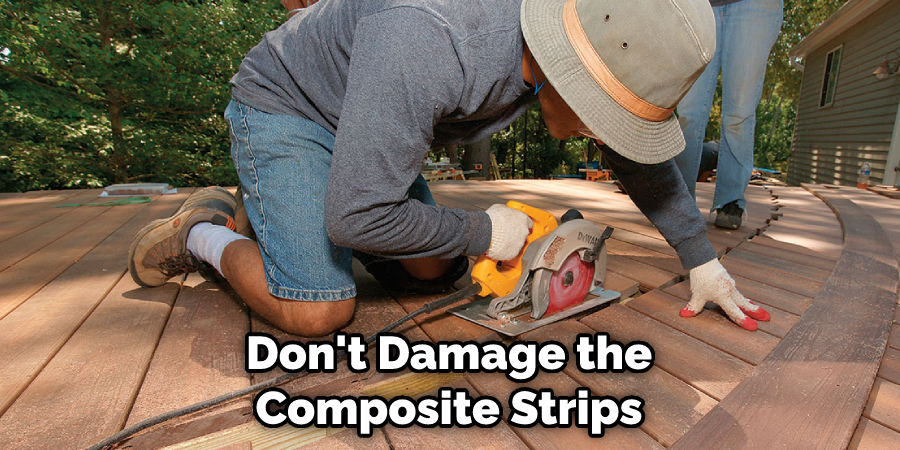
Not cooling the strips before installing could potentially cause warping or cracking, so it’s important to give them time to cool and set. In addition, be sure to prepare your chosen area properly before installation. Proper precautions will go a long way when it comes to bending composite decking!
Following these steps on bending composite decking is a great way to create a unique and eye-catching feature for your outdoor living space. If you follow the instructions carefully, you can expect stylish results that will last for years to come!
Tips to Bend Composite Decking
- There are many different types of composite decking on the market, and not all of them can be bent. To choose the right type of composite decking for your project, you will need to consider the manufacturer’s recommendations, the type of decking, and the desired finished look.
- To bend composite decking, you will need to pre-bend it before installation. This can be done by using a heat gun or by steaming the decking. If you are using a heat gun, you will need to be very careful not to overheat the decking, as this can damage it.
- Once you have pre-bent the composite decking, you can then install it according to the manufacturer’s instructions. It is important to note that bent composite decking cannot be installed using traditional fasteners; instead, you will need to use special fasteners that are designed for use with bent composite decking.
- After you have installed the composite decking, you will need to finish it off by trimming any excess material and adding a sealant or top coat. This will help to protect the composite decking from weather damage and UV rays.
- It is important to note that composite decking requires more maintenance than traditional wood decking. To keep your composite deck looking its best, you will need to regularly clean it and perform any necessary repairs.
How to Create a Unique and Eye-Catching Look With Composite Decking?
Creating a unique and eye-catching look with composite decking is easier than one might think. Composite materials are perfect for an outdoor deck because of their low maintenance, fade- and stain-resistance, durability, and convenience. To have an incredibly stylish deck, designers can incorporate multiple colors of the same tone or mix different shades to give an unexpected look.
Adding unique railings or posts to the deck will draw further attention. Creative shapes to come up with something that’s more than just your typical rectangle or square can also be done by cutting composite into strips and laying them in a zig-zag pattern, creating a harmonious design. With a little bit of creativity, you can make your composite deck truly stand out with its special style.
How to Bend Decking the Right Way?
Bending composite decking can add a unique, beautiful touch to any outdoor space. To ensure that it is done safely and properly, there are a few minor steps to take. Before getting started, it is important to research the instructions for each type of composite decking to make sure it can be shaped and bent over time without too much difficulty.
You will then need access to a heat gun or flat iron on low heat, as this low intensity will prevent the product from splitting and cracking. Lastly, it is necessary to wear protective gear, such as gloves and safety glasses while shaping the material so you don’t accidentally burn yourself along the way. By following these tips your do-it-yourself project will result in an amazing-looking addition to your backyard!
How To Ensure Long-Lasting Results when Bending Your Composite Decking?
Bending composite decking can be a great way to give it a unique style, but it takes careful consideration to make sure your results will last. To ensure long-lasting results when bending composite decking, you need adequate support from the bottom joists and ledgers of your deck framing.
Furthermore, you should consider using multiple pieces of bent material that have been joined together instead of trying to achieve large spans with fewer pieces. Additionally, if your bends are sharp or angled make sure a gradual radius is used for any changes in direction. Whatever the size of your bend make sure to consult the manufacturer’s recommendations for their product and follow those instructions.
Finally, secure the material well so that it still has room to expand and contract as temperatures change. By taking these extra steps when bending composite decking you can enjoy beautiful curves and shapes in your outdoor living space with confidence that they are built to last.
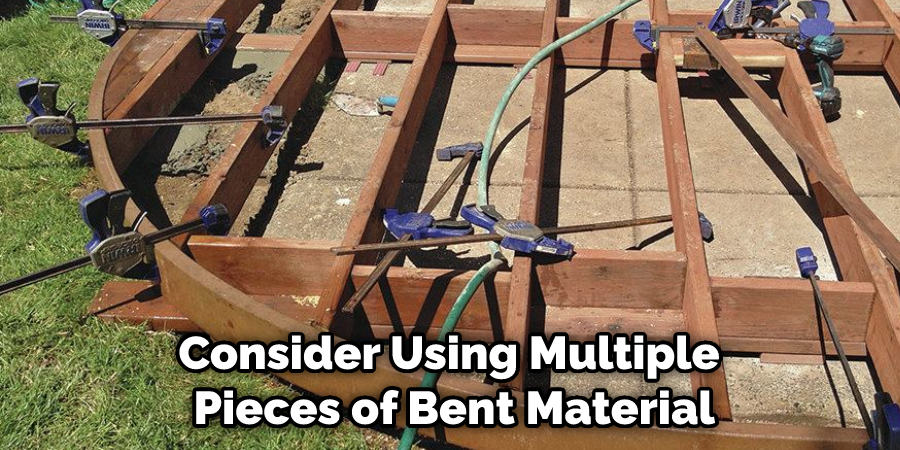
Conclusion
When you’re ready to give your composite decking a new look, use these tips on how to bend composite decking. With a little time and effort, you can have the beautiful, curvaceous composite deck of your dreams without spending a lot of money.
By following these steps, you can ensure that your Composite Deck will remain to look great for years to come.
You Can Check It Out to Protect Ipe Wood Deck

